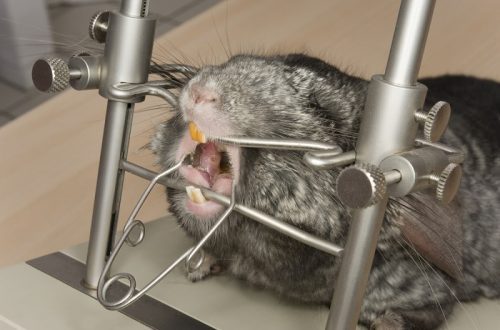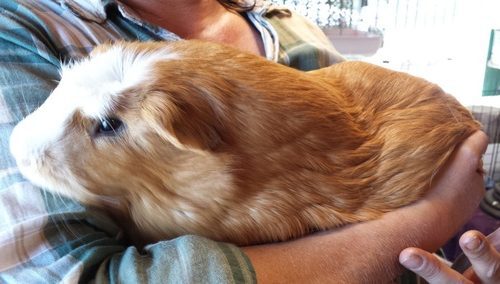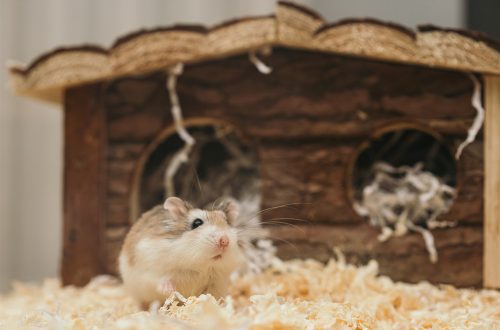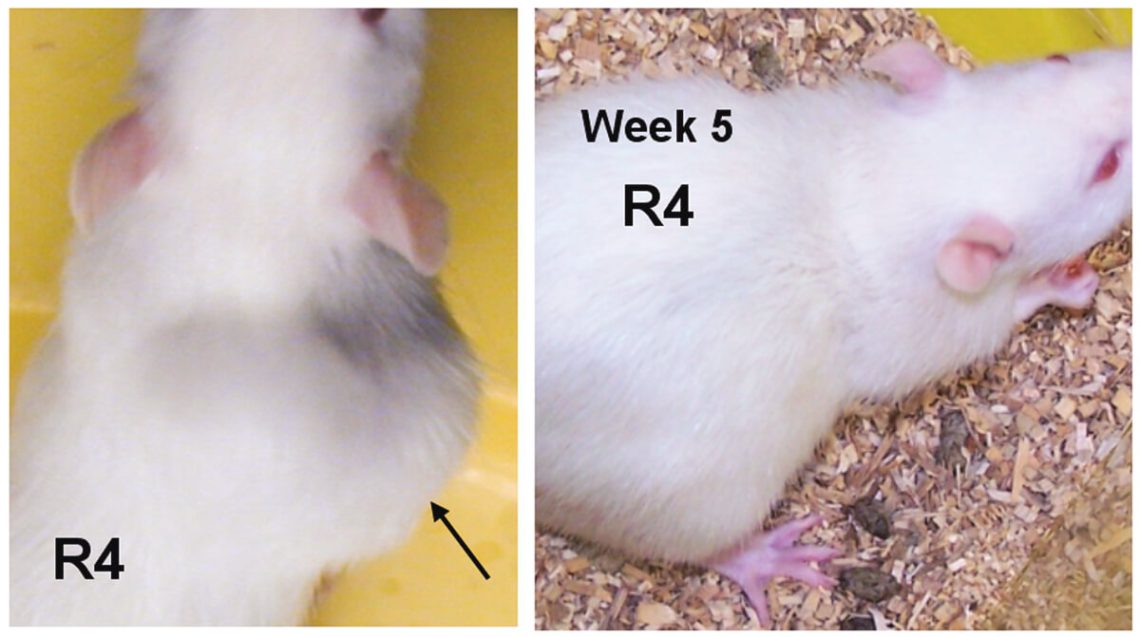
Tumors in domestic rats: symptoms, treatment, prevention
Decorative rats are devoted and emotional rodents, not inferior in intelligence and affection to the owner to dogs and cats. Keeping these animals in comfortable home conditions does not protect them from cancer.
Tumors in rats are even more common than common pathologies of the respiratory organs and lead to death. The most susceptible to oncology are female domestic rodents. What to do if you notice bumps on a rat? It is necessary to show the animal to a specialist to clarify the diagnosis and promptly prescribe treatment.
Contents
What are tumors in ornamental rats
A tumor is an abnormal growth of abnormal tissue in the body. Neoplasms in rodents can affect any tissue of the body. A tumor in a domestic rat can be benign or malignant.
A benign tumor is characterized by the presence of a connective tissue capsule that delimits the neoplasm from adjacent tissues. Due to this structure, this type of tumor is easily removed surgically. As it develops, such a neoplasm does not form metastases in other organs and does not grow together with healthy tissues, like cancer cells. The danger of benign tumors lies in squeezing the organs; with rapid growth, they reach a fairly large size and deprive the rodent of the ability to move and eat. If bumps are found on the body, it is advisable to treat the rodent as soon as possible.
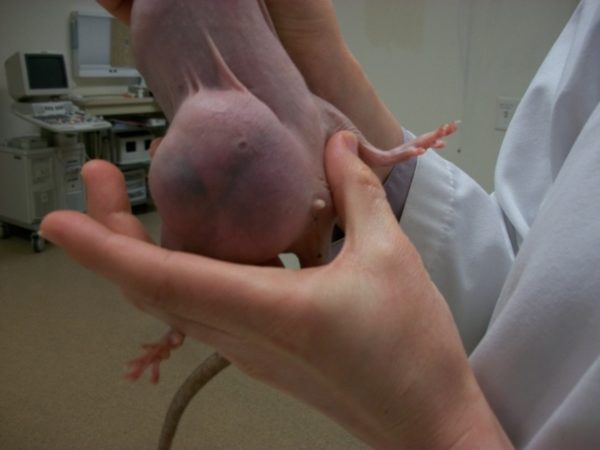
A malignant or cancerous tumor is characterized by rapid growth, the formation of metastases in various organs and tissues, and the ability to grow into healthy cells and regenerate them. Cancer in rats is not subject to surgical treatment, the pet is left to live out its life with decent care and feeding, or euthanasia is used to alleviate the pain of the animal.
IMPORTANT!!! Benign tumors can be removed surgically, rodent cancer is not treated!!!
Causes of oncology in ornamental rats
As a result of many studies, the following causes of neoplasms in domestic rats have been identified:
- the use in the pet’s diet of a high content of fatty feed and products with dyes and preservatives;
- lack of necessary active physical activity of the animal;
- heredity;
- stress;
- mycoplasmosis;
- genetic predisposition to oncology in females.
Where can there be a tumor in a domestic rat
Most often, tumors in ornamental rats occur at the age of two years. Neoplasms can be localized in various areas of the rodent body:
Tumor of the mammary glands
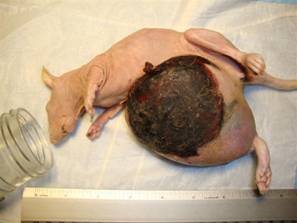
Female rodents are genetically predisposed to the appearance of tumors of the mammary glands, although sometimes such neoplasms are also found in males. Most often, these are fibroadenomas – benign tumors located on the abdomen, armpits and in the groin of the animal in the area of uXNUMXbuXNUMXbthe glands. The owner, who often caresses the animal, notices a swelling in the rat’s abdomen at the earliest stage of its occurrence. At home, a mobile bumpy swelling is easily determined, which can be soft and flat, or compacted with the growth of fibrous tissue. The bump under the skin is permeated with a venous network, when probing it easily slips between the fingers, there is no edema and firm fixation with subcutaneous tissue. If the swelling is tightly fused with surrounding tissues, there is a chance of developing cancer in a rodent. The nature of the neoplasm is confirmed only by histological examination.
Tumor on the neck
Often, a tumor is diagnosed in a rat on the neck, which is defined by touch as a subcutaneous tubercle that easily rolls between the fingers or is tightly fixed in the tissues.
A bump on a rodent’s neck can be an abscess, an inflamed lymph node, a neoplasm, or a grossly enlarged thyroid gland. Differential diagnosis and the nature of therapy should be carried out by a specialist in a veterinary clinic.
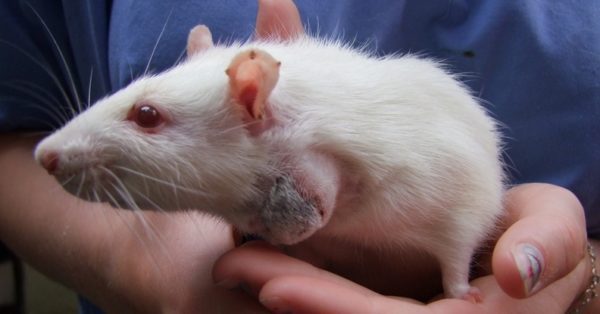
Tumor on the side
A tumor in a rat on its side occurs when the neoplasm is localized in the lungs or abdominal cavity. The bump on the side is often large, you can feel the tubercle on the leg. In such cases, vivid symptoms indicate an oncological disease in a rodent: lethargy, bloody discharge from the mouth, vagina, urethra and anus.

Tumor under the leg
Sometimes you can find a tumor under the paw in a rat. The bump under the paw turns out to be an inflamed lymph node, a wen or a tumor of the mammary gland.
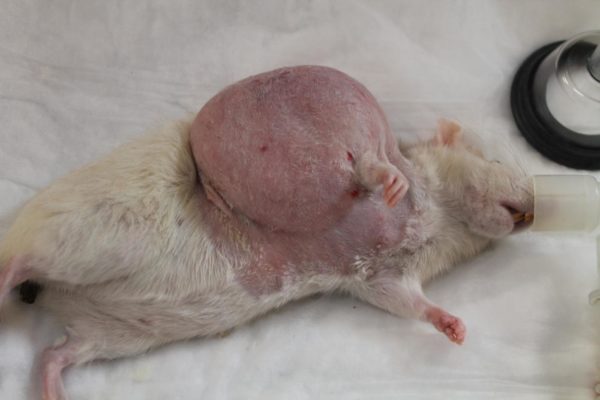
Tumor under the tail
A tumor in a rat under the tail indicates a neoplasm on the skin and subcutaneous tissue, which are felt like dense tubercles on the genitals of animals. It is advisable to urgently remove them, females often experience relapses.
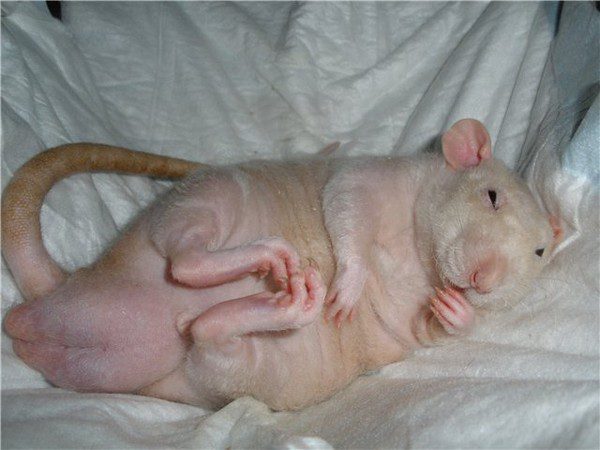
Tumor on the cheek
A neoplasm may appear on the pet’s cheek, in which case the owner notices that the rat’s cheek is swollen. Often the animal becomes aggressive. In the place where the cheek is swollen, a subcutaneous ball or a solid bone neoplasm can be felt, most often it is a cancerous tumor – squamous cell carcinoma, which is not amenable to surgical treatment.
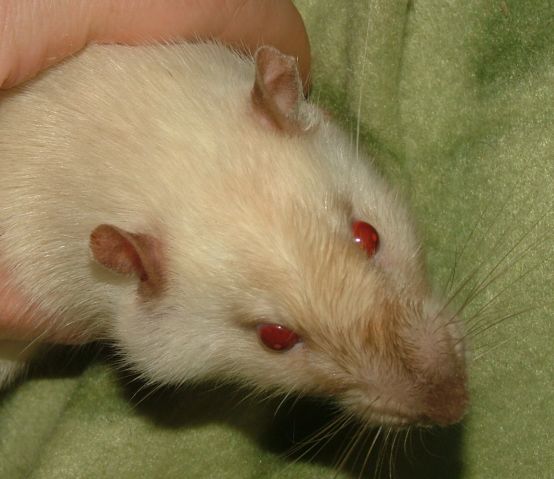
Encephaloma
Quite often, a benign tumor in the brain is detected in animals, which manifests itself with neurological symptoms: the animal loses coordination of movement, the rat lies with tense stretched front and backward curved hind legs, the joints do not bend. Such neoplasms are inoperable.
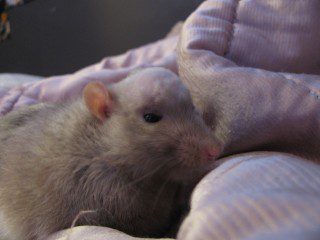
bone tumor
Domestic rats are also prone to malignant bone tumors – osteocarcomas. Neoplasms are localized on the bones of the limbs, skull and ribs, as a result, as they grow, the pet completely loses motor activity. The wearer can feel for characteristic thickenings in the bone tissue.
What should alert
An attentive owner should be alert and take the pet to a veterinary clinic for timely treatment if the following symptoms are detected:
- soft flat bumps or hard bumpy growths on the body of the animal;
- lethargy, loss of appetite and weight, exhaustion;
- the animal does not play, tries to hide;
- wool is tousled, foci of baldness are observed;
- the skin loses elasticity, scabs appear;
- increase or decrease in bowel movements and urination;
- spotting from the mouth, urethra, vagina and anus;
- hernia;
- mucous membranes are colored gray.
The final diagnosis is made by a veterinarian after a general examination of the animal, a laboratory study of a general and biochemical blood test, the nature of the tumor is determined histologically.
Treatment of neoplastic diseases
Treatment of oncological diseases in ornamental rats is carried out by a surgical method. A conservative method using immunostimulants and hormonal medications that inhibit the growth of a neoplasm does not guarantee a favorable outcome.
The operation is not used for cancerous tissue lesions with the formation of numerous metastases, tumors in the brain, severe malnutrition of the animal, age over 3-4 years, the presence of concomitant serious diseases, in such cases the prognosis is doubtful or unfavorable.
The outcome of the operation and the possibility of relapses depend on the stage of formation of nodes and the timeliness of surgical treatment. Small tumor formations in the early stages are quite easily removed, the prognosis is cautious or favorable. It is impossible to allow the growth of a benign tumor to a huge size and the depletion of the animal. Often, a pet undergoes several operations with repeated detections of neoplasms.
IMPORTANT!!! The earlier the tumor is detected and treated, the greater the chance of saving and prolonging the life of a domestic rat!
How is surgery to remove a tumor performed?
Surgical treatment is carried out in several stages:
- Before the operation, the specialist assesses the general condition of the rodent, the size, nature and localization of the neoplasm, a urine and blood test is performed, an x-ray is prescribed to exclude abscesses in the lungs and systemic chronic diseases;
- Surgical removal of the tumor formation is performed under a veterinary specialist in a veterinary clinic, general anesthesia and analgesics are used for anesthesia, before anesthesia, drugs are administered that support the work of the heart and respiratory organs during the operation;
- For small subcutaneous neoplasms, the specialist cuts the skin and subcutaneous tissue at a sufficient distance from the tumor, excised the affected tissues with a scalpel, the tumor is removed with the vascular pedicle and adjacent healthy tissues, and the vessels feeding the tumor formation are ligated. In the case of extensive damage to the mammary, salivary glands or internal organs, a wide excision of tissues and partial removal of the glands or parts of the affected organ and muscles occur, along with a tumor and greatly enlarged lymph nodes;
- The wound is sutured in two stages, the peritoneum and subcutaneous tissue are sutured with special absorbable threads, the skin is sutured with silk thread, drainage is left at the bottom of the wound to drain the exudate.
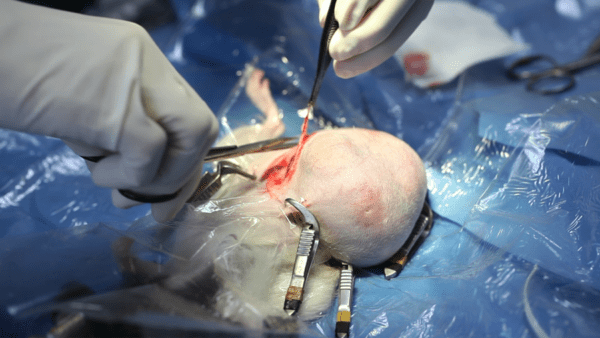
In the first two hours after surgery, the animal may vomit, involuntary urination and defecation, loss of coordination and aggressiveness due to pain shock. At this time, it is important to provide a change of bedding for the rodent and access to clean drinking water. For the first three days after the use of anesthesia, fermented milk products are excluded from the diet of a decorative rat.
Post-operative care
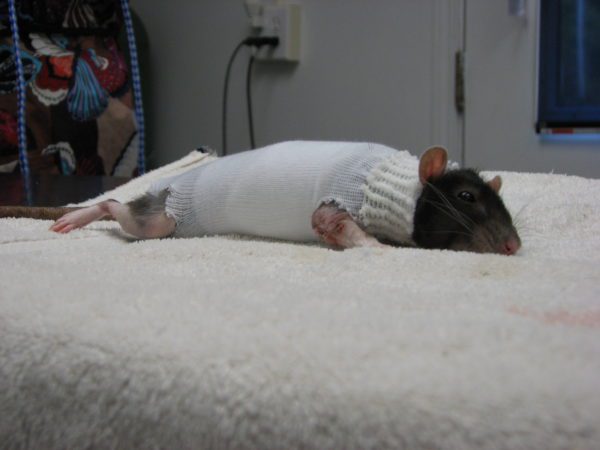
Postoperative therapy of the pet is carried out at home with careful observation of the owner of the rodent. On the first day, a heating pad is shown; for this purpose, bottles with warm water can be used. The owner should not allow the postoperative sutures to “lick”; for this, a special or home-made collar can be used. On the recommendation of a specialist, the owner independently at home or in a clinic treats the wound with antiseptic solutions and applies bandages with anti-inflammatory ointments. The control of the healing of the postoperative wound and the removal of sutures is carried out only by a veterinarian.
Cancer prevention in rats
There are several ways to prevent the appearance of tumor formations in a domestic rodent:
- The pet’s diet should be varied and low in calories, with a reduced content of fats that have a carcinogenic effect. It is necessary to exclude the consumption of animal products containing dyes and preservatives;
- If possible, you should try to purchase a pet from decent breeders who, when breeding, select individuals that are resistant to the development of cancer;
- At home, it is better to keep males, they are less prone to the appearance of various neoplasms.
Carefully inspect your domestic rodents, at the first manifestations of a deadly disease, do not waste time, show your pet to specialists for a speedy diagnosis and timely treatment. It is in your power to save the animal and prolong its life.
Symptoms and treatment of tumors in rats
3.4 (68.21%) 112 votes



